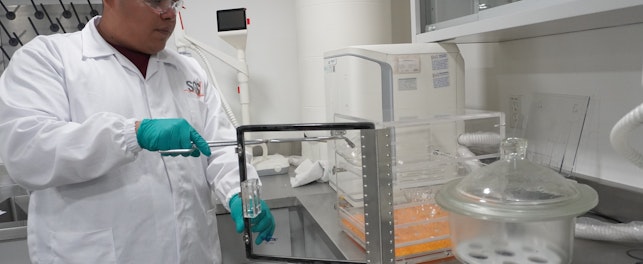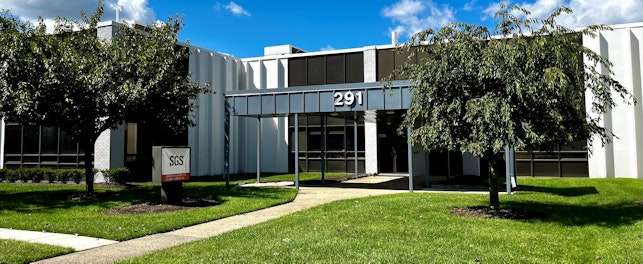Software is at the heart of the modern automotive industry. Vehicles rely on software for everything from engine management to infotainment, ensuring the driving experience is smooth, safe and efficient. However, this dependence on software also makes modern vehicles suspectable to cyberattacks.
We expect connectivity in our homes, at work, and even in our pockets, so why not in our vehicles? The modern vehicle is now more than simply a means of transport; it is an integral part of our digital world.
What is an SDV?
The term software-defined vehicle (SDV) applies to any car where most of its functions, features and capabilities are controlled and enhanced through software updates, rather than just hardware. In essence, this is all modern vehicles.
The software, and the data its collects and organizes, is used for a variety of purposes, including:
- Driver assistance systems
- Autonomous driving
- Sensors
- Voice control systems
- Internet connection
- Inter-vehicle connection
- Over-the-air (OTA) remote updates to vehicle systems
SDVs constantly interact with the environment around them, learning and supporting service-based models while onboard electronics become high-performance computers that enable a level of autonomous functionality in the vehicle.
A key strength of this approach is that hardware and software are separated, thereby making it easier to update and upgrade the systems that control our vehicles.
Cybersecurity risks
Wherever connected technologies are employed, cyberattacks are a concern. This is particularly pertinent when the impact of a system failure could be catastrophic. For example, if the software in an SDV fails to function properly because it is not adequately protected, there could be a range of outcomes. At one end of the risk scale, the engine could misfire or an onboard navigation system could stop working. At the other end however, the driver could lose control, making the vehicle a danger to everyone on the road.
The only way to guard against cyberattacks is to stop hackers from accessing the system. However, SDV are not closed-loop systems and there are many entry points to exploit – Wi-Fi, Bluetooth, OTA, etc.
Responses
Growing awareness of the vulnerabilities of hardware to cyberattacks has resulted in a sharper focus on the security of chips. Several legislative initiatives are being introduced to emphasize security through methodologies that focus on the complete product lifecycle. For example, the EU’s Cyber Resilience Act (CRA) and the US Cybersecurity and Infrastructure Security Agency’s (CISA) hardware bill of materials (HBOM) framework.
These bills seek to force change, making adequate cybersecurity provision a central part of every product. For example, under the CRA, companies found to be in non-compliance risk a fine of EUR 15 million or 2.5% of global turnover.
The automotive sector advocates a ‘security by design’ approach, as exemplified by standards such as ISO/SAE 21434 – Road Vehicles — Cybersecurity Engineering. The traditional method of testing finished hardware and software is simply not sufficient to respond to modern threats. Instead, designers and manufacturers need to facilitate and strengthen a mindset where security is considered at all stages of the lifecycle by working with verification teams and cybersecurity experts throughout development.
One risk in terms of cybersecurity is a system-wide breakdown where the complete computer architecture of the vehicle fails. The SDV approach can be an advantage in stopping this possibility because hardware and software are separated. Since each system is isolated, for example, the engine management system does not directly interact with the infotainment system, and so if one is attacked, the problem cannot automatically spread to the rest of the vehicle.
Ensuring security in SDVs
While there is always an element of risk versus cost when considering cybersecurity, effective mitigation requires both hardware and software to be, at a minimum, compliant with recognized standards.
Hardware components – microcontrollers, sensors, communications modules, etc. – should be evaluated against industry-specific standards and guidelines to ensure the necessary security features and resistance to tampering while still enabling operability in all conditions. Software components – operating systems, middleware and applications – benefit from evaluation and certification that covers code reviews, vulnerability assessments, and testing against security benchmarks. This will identify potential vulnerabilities and/or demonstrate compliance with industry standards.
The finished SDV should also undergo integrated system certification to ensure the overall security and integrity of the full platform. Evaluating the interaction and interoperability of the different components within the SDV provides an overall assessment of the platform’s resistance to cyberattacks.
However, each evaluation is a moment-in-time assessment of the SDV’s cybersecurity and it cannot consider unknown future threats. Therefore, certification should be a continuous process that ensures compliance throughout the lifecycle of the SDV. Manufacturers and developers must establish mechanisms for continuous monitoring, vulnerability management, and compliance auditing to identify and address emerging cybersecurity risks and maintain certification requirements.
Compliance with standards such as ISO/SAE 21434 and ISO 26262 for functional safety is essential for demonstrating the safety and security of the SDV. It is also partly a regulatory requirement in some territories.
Incorporating hardware and software component certification into the development and deployment of SDV essentially enhances cybersecurity resilience; mitigating vulnerabilities and ensuring regulatory compliance while building trust among consumers.
SGS solutions
SGS Brightsight offers a range of automotive cybersecurity testing and certification solutions, covering everything from complete vehicles to hardware, software, and integrated systems. We support manufacturers and developers at every stage of the SDV lifecycle, from pre-evaluation, including IATF 16949 pre-audits and technical system development life cycle (SDLC) advice, to post-evaluation, with testing and certification solutions that ensure continued compliance.
We offer comprehensive security evaluation services against all relevant standards:
- IATF 16949 – automotive quality management systems
- Trusted Information Security Assessment Exchange (TISAX®)
- ISO 9001 – quality management systems
- IATF 16949 – automotive quality management systems
- ISO/IEC 27001 – information security, cybersecurity and privacy protection
- ISO 26262 – road vehicles functional safety
- ISO/SAE 21434 – road vehicles cybersecurity engineering
- ISO/IEC 42001 – artificial intelligence (AI) management system
- Car Connectivity Consortium (CCC) – digital key
- Global Systems for Mobile Communications (GSMA) – embedded universal integrated circuit card (EUICC) security assurance (ESA)
In addition, we can provide test reports for UNECE Regulation 155 and 156.
The total global market for SDVs is expected to see exceptional growth in the next few years, rising from USD 35.8 billion in 2022 to USD 249.8 billion in 2032, a CAGR of 22.1%.1 To maintain market access and ensure the safety of road-users, manufacturers and developers of SDV must ensure their products conform to the highest standards for cybersecurity or there is a very real risk of noncompliance and consumer dissatisfaction.
Enjoyed this article?
Find more news and updates in our Consumer Compact newsletter >
Delivered direct to your inbox
Subscribe to Consumer Compact >
References
1 Software-Defined Vehicle Market Size & Share Report – 2032 (gminsights.com)
© SGS Société Générale de Surveillance SA.





